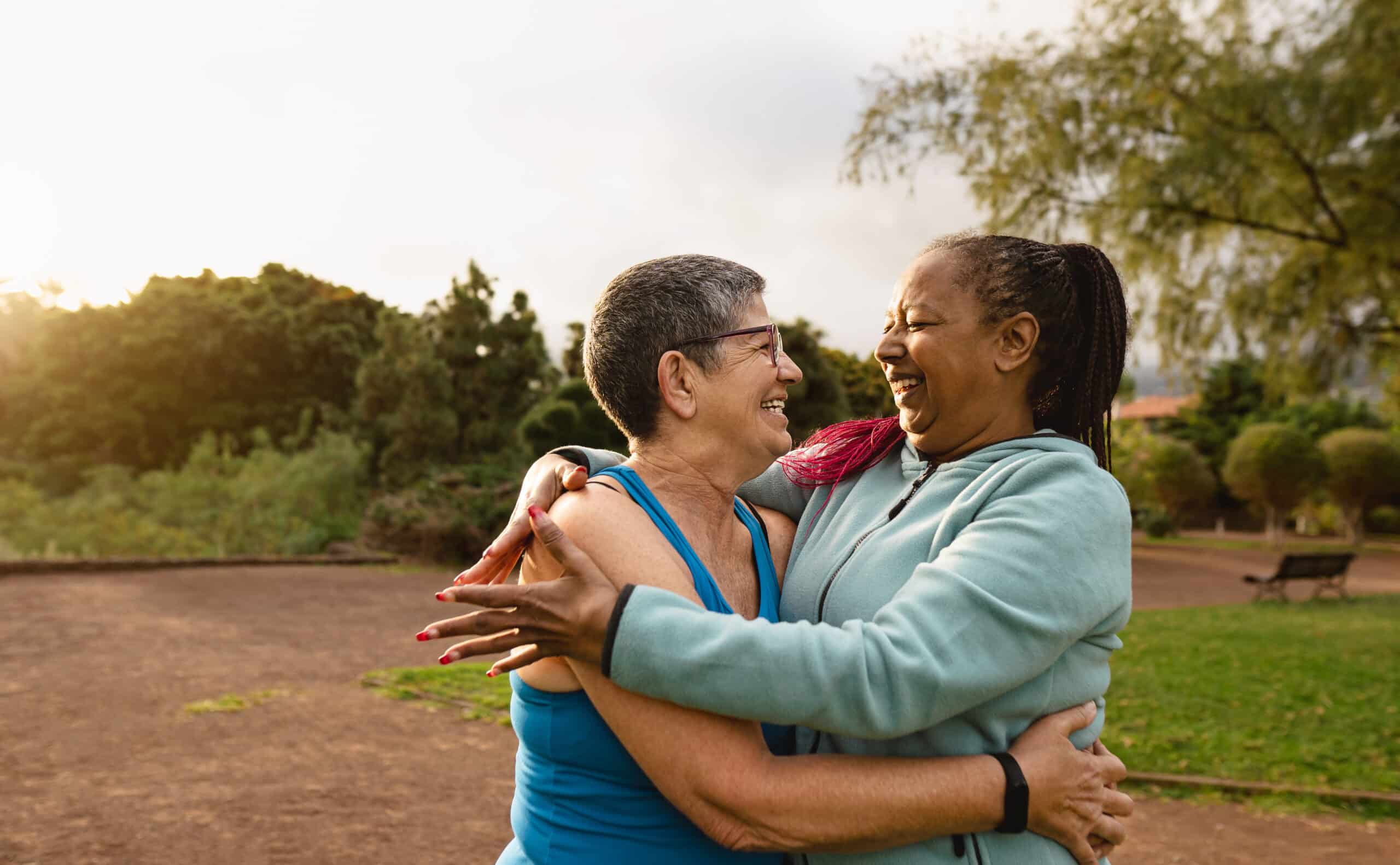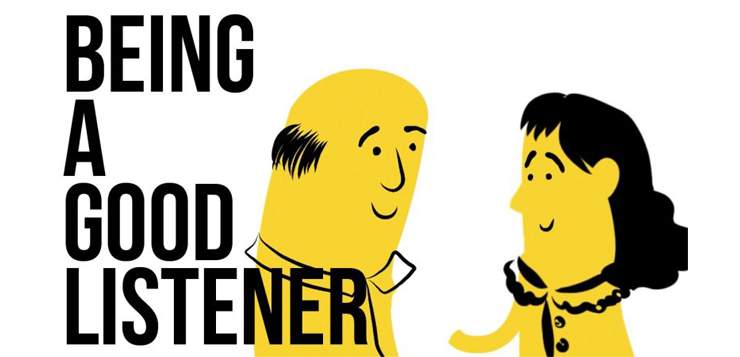Loneliness, social isolation, and disconnection don’t hit you over the head. They slowly sneak up on you. And then, like a semi-truck on the freeway, they overtake you, leaving you disoriented, down in the dumps, or depressed.
In a world that increasingly functions with fewer face-to-face interactions, all of us are vulnerable to becoming socially isolated.
A small, but telling example: Recently, after lapsing into a routine of intensely working at home without socializing much I felt decidedly blue. But it wasn’t until I forced myself to get out of the house and make small talk with the UPS Store clerk and a woman walking her Dachshund that I realized the cause of my malaise. In a very short period, I’d become a social desert, parched for connection with other human beings. The clarity of this insight was brought home by the fact that I felt so much better after spending just a little bit of time with others.
The Need for Belonging
I’m not an outlier. For as long as humans have existed, we’ve needed each other. Connection, community, and cooperation are our lifeblood. We evolved in tribes, banding together for safety, resources, and procreation. Belonging is baked into our DNA.1
And, yet, despite our technological genius and our ability to reach out and instantly connect with others, an astounding number of us lack the meaningful social bonds we need to thrive.
An astounding number of us lack the meaningful social bonds we need to thrive.
“Loneliness is probably the number one complaint with my clients,” says Marilyn Levy, a psychologist in Santa Monica, California, adding it’s a lament she hears from teenagers to 70-year-olds. “Post-pandemic, we got very used to being alone. It’s scary to go out in the world because often we don’t know who we are anymore.”
A collective loss of social identity and fluency isn’t solely a function of the pandemic. Long before COVID, and even before the advent of social media and the internet, we were becoming wary of putting ourselves out there.
Participation in civic, community, and religious organizations has been declining for decades.2 A third of us now say we don’t interact with neighbors.3 Nearly a quarter of us haven’t made a new friend in five years.4 Loneliness is a global epidemic.5
None of this is good for us. Research shows loneliness is as bad for our health as smoking 15 cigarettes a day.6 Conversely, studies reveal robust relationships are the strongest determinants of happiness and longevity.7
Research shows loneliness is as bad for our health as smoking 15 cigarettes a day. Conversely, studies reveal robust relationships are the strongest determinants of happiness and longevity.
Matthew Lieberman, a professor and director of the Social Cognitive Neuroscience Lab at UCLA, says that while we’re hardwired to socialize and do most everything better through cooperation, whether that’s making dinner or designing a rocket ship, we’ve bought into the myth of individual destiny, particularly in western countries.
“It’s hard within our cultural narrative to say the reason I’m unhappy is that I’m not spending time with people,” he says.
Our current culture is also conspiring to create a world that seamlessly separates us. We order everything from Thai food to tennis shoes online without speaking to each other. We stream blockbusters from our couches. And many of us work from home without swapping stories with colleagues about our kid’s latest soccer game triumph—or are working so hard in our service jobs we don’t have time to connect meaningfully.
How to Be Socially Healthy
All of which made me wonder: What can we do to become socially healthy?
Like any other facet of improving our health, I learned by talking with relationship experts, psychologists, neuroscientists, and the socially gifted among us that creating strong connections takes intention, effort, and constancy. It also takes an ability and a willingness to prioritize friends and family over long hours at work, bingeing on Netflix, or any other pursuit that prevents communion.
While the loneliness epidemic is bleak, the good news is that we all have the capacity to create social well-being and, in turn, boost our happiness. And, often, we can rely on others to show us how.
The good news is that we all have the capacity to create social well-being and, in turn, boost our happiness. And, often, we can rely on others to show us how.
For years, I’ve secretly envied my neighbor, Lisa Waltz Morocco, an actress who lives in my west Los Angeles neighborhood. I’ve marveled at her because she seems remarkably happy and has so many friends. I wanted to know how created such a vibrant social life and whether it was the source of her happiness, so I invited her over for a backyard interview.
Like most of us, Lisa didn’t start off with a group of ready-made friends. In 1989, she moved into the neighborhood and realized she didn’t know a soul. So, she hand-made invitations to a holiday party at her home, taped candy canes to them and walked door-to-door delivering them to neighbors. Six people came to her party. The following year 20 showed up. It was enough to keep the holiday spirit going for decades.
At its pre-pandemic peak, about 150 people came to her holiday bash. It’s an impressive turnout, but more impressive is the community she’s created for herself and how those connections continually buoy her.
“If I were really in trouble or needed someone to take me to the airport, I know I could call anybody here, and they would do that for me,” she says.
For many of us, throwing an annual holiday party is as daunting as climbing Denali. Still, what Lisa is doing is the foundation for a thriving social life. She’s making a consistent, determined effort to connect with others.
Building Relationships Takes Work, and the Benefits Are Worth It
says Jeffrey Hall is a relationship researcher, and a professor of communications at the University of Kansas. “People are work, and they’re tiring, but the most important things we do in life take work and are tiring,” he says.
Hall’s research shows it takes 50 hours together to turn an acquaintance into a casual friend; 90 hours to turn casual friends into more reliable friendships, and 200 hours to create intimate relationships.8
And indeed, the older we get, the more effort it takes to make and maintain friends. As we move from the easy days of forming friendships in school, the norm is not to gain buddies but to shed them. Caught up in commutes, careers, and intensive parenting, we give friendships short shrift, downplaying our need for them and the time it takes to nurture them.
Previous generations didn’t seem to worry about such social calculus, nor did they seem to be as lonely. To verify my hunch, I asked Levy, the Santa Monica psychologist, who is 85 years old, about her upbringing and to gain insight into how society has lost its communal moorings.
Levy grew up in Youngstown, Ohio, where her dad was a rotary club president and a board member of the family’s temple. During summers, when the air was as hot and as sticky as honey, neighbors gathered under the shade of her parent’s large, screened porch for relief from the heat and conversation. After dinner, kids spilled onto grassy lawns and played.
“We all knew our neighbors,” she says. “You just dropped in or wandered over and had dinner.”
Over her lifetime, Levy’s homegrown sense of connection migrated from neighborhoods to her interests in theater or political activism. It’s a model she counsels her lonely clients to follow. “Find a group,” she says. “You’re not going to find like-minded people walking into a bar.”
For some, a group might be social salvation. But creating connection is nuanced. Whether you’re extroverted or introverted, live alone or with others, crave one-on-one time or enjoy mixing within large groups, all affects how you might nourish your social life.
How many relationships you need to feel content also differs. One good friend helps alleviate loneliness, as can making small talk with strangers. Hall says spending time with the 15 most important family and friends in your life, if you’re fortunate to have them, safeguards social well-being.
The Science of Being Social
Either way, if being happy is our goal, it pays to heed our hardwiring. Human brains are relentlessly social.
If being happy is our goal, it pays to heed our hardwiring. Human brains are relentlessly social.
So much so that when we’re not focused on a task, our brain’s default mode network thinks about ourselves, others, and our relationships. The default mode network is known for its mind-wandering, but Matthew Lieberman at UCLA’s Social Cognitive Neuroscience Lab puts a finer point on it.
He explains that during downtime, the brain engages in social processing, which helps us make sense of relationships, update expectations of others, understand social norms and prepare for interactions.
Lieberman estimates as much as 70% of our thinking involves such social cogitation. While that may seem like mental overkill, relationships occupy so much headspace because our ancestors needed to be copacetic to survive.
“The concern isn’t just free-floating anxiety about being viewed positively by others,” says Lieberman. “Human beings aren’t good at living on their own. We’re not designed for it.”
After interviewing Lieberman and others, I reflected on how our current culture encourages us to override these primal needs and how increasingly easy it is to go it alone. The path of least resistance is to order in, stream and watch alone, or exercise at home on a solitary stationary bike. It’s true that people take work and can be burdensome. Along with the good times comes occasional drama and duress.
Nonetheless, after I finish writing this story’s last few words, I will put a sticky note on my computer that reads: “Get out of the house and talk to people.” I know doing so will prevent me from lapsing into social isolation and fulfill an ancient human need that aligns my mind, body, and spirit with well-being.
Five Ways to Thrive Socially
Creating social well-being takes dedicated effort. But like any other wholesome habit we can create a more vibrant social life by taking small, consistent actions. Here are five ways you can create more meaningful friendships and greater happiness.
1. Create a Social Calendar
Relationship researcher Jeffrey Hall says we erroneously believe that friendships happen organically when, in fact, they develop through intentional planning. Create a plan for who, how, and when you want to spend time with people and then follow through. Doing so not only makes you more socially active it also ensures you’re spending time with people you really enjoy.
2. Ride the Momentum
One trick Hall recommends is to end every social interaction with a plan to meet, text, or talk again. Before Hall gets off the phone with his best friend who lives in another city, for example, he schedules time to talk to him again in a couple of weeks.
3. Turn Solitary Events into Social Ones
Many of the things we do alone we can just as readily do with others. We tend to watch television alone, but it’s easy to turn such a solitary event into a social one by creating a watch party with friends through a streaming service. The same goes for exercise, cooking, or taking an online class—or even running errands.
4. Bank on Friendship
Once you’ve made a friend, keep investing time with them and stay current in their lives. Your efforts will create a kind of compounded interest. The more you connect with each other, the deeper your intimacy will become and the greater social reward you’ll reap.
5. Be Politely Persistent
If your initial efforts to connect with a friend or make a new one get thwarted, don’t retreat. “A lot of people think ‘I don’t want to put someone out by inviting them to spend time with me,’” says Hall. “Well, if someone says, I’m sorry, we can’t make it this week, (ask them) how about next week?”
Sources:
1. https://www.ncbi.nlm.nih.gov/pmc/articles/PMC8405711/
2. https://www.sciencedaily.com/releases/2011/08/110820135307.htm; https://insidesources.com/erosion-social-capital/ and https://www.supersummary.com/bowling-alone/summary/
3. http://cityobservatory.org/wp-content/files/CityObservatory_Less_In_Common.pdf and https://www.pewresearch.org/social-trends/2018/05/22/how-urban-suburban-and-rural-residents-interact-with-their-neighbors/
5. http://cityobservatory.org/wp-content/files/CityObservatory_Less_In_Common.pdf and https://www.pewresearch.org/social-trends/2018/05/22/how-urban-suburban-and-rural-residents-interact-with-their-neighbors/
6. https://news.byu.edu/news/prescription-living-longer-spend-less-time-alone
7. https://journals.sagepub.com/doi/full/10.1177/0265407518761225e
8. https://news.ku.edu/2018/03/06/study-reveals-number-hours-it-takes-make-friend








